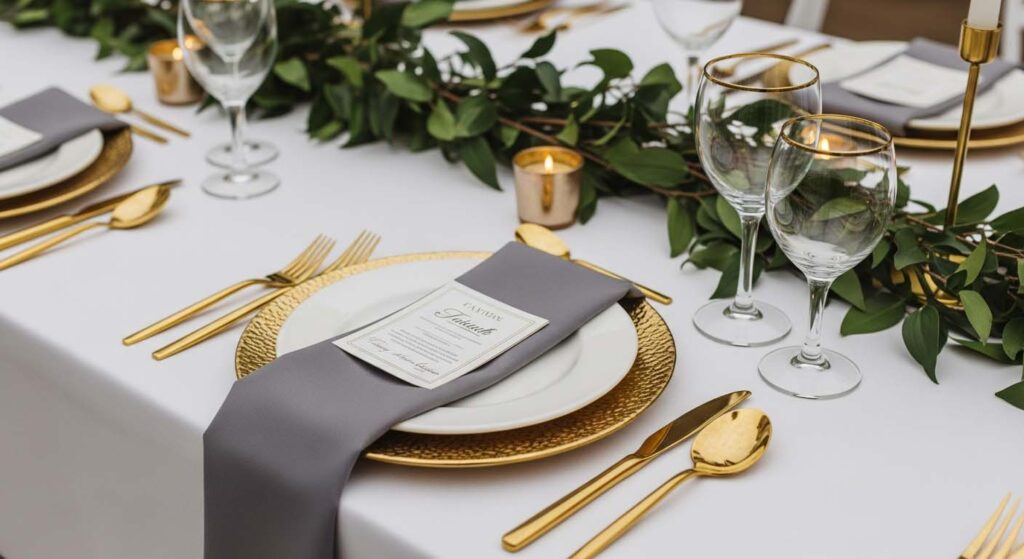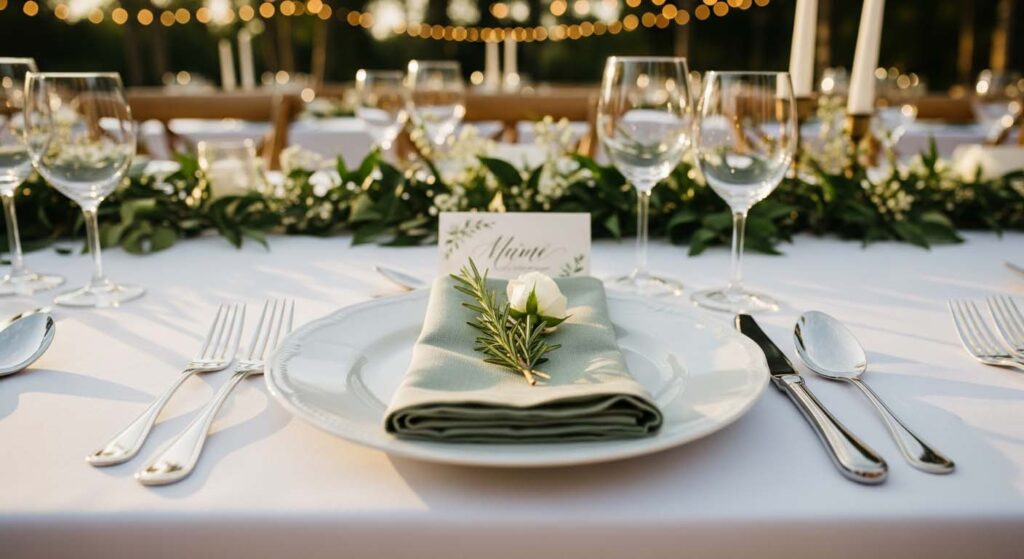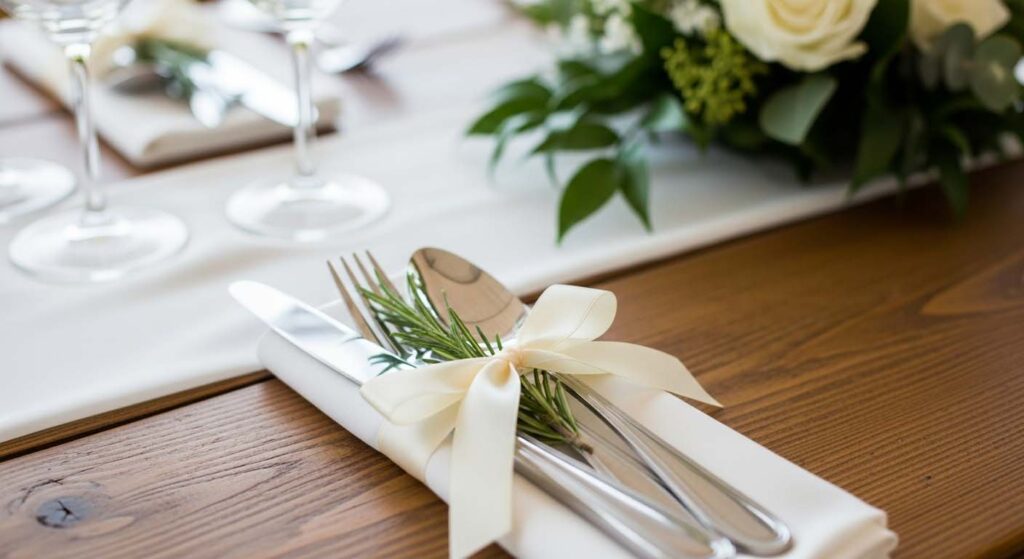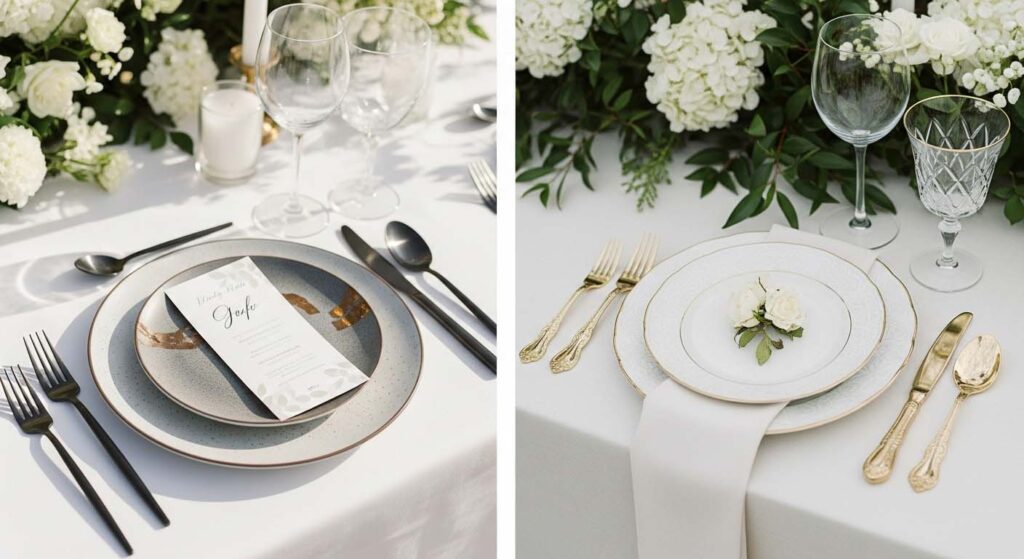How to choose the right wedding silverware style?
You're planning your wedding, and every single decision feels huge. The silverware seems like a small detail, but you know the wrong choice can clash with your theme and make your beautiful tables look disjointed.
Choose your wedding silverware by first matching it to your theme—modern, classic, or rustic. Then, consider the color, shape, and weight to ensure it complements your dinnerware. The right style creates a cohesive and elegant look for your tables.

I've seen so many couples get lost in the details of flowers and invitations, nearly forgetting about the one thing every single guest will hold: the flatware. As a manufacturer, I can tell you that a piece of well-chosen silverware does more than just help people eat—it communicates quality and elevates the entire meal. A seasoned professional like Jacky, who sources tableware for major brands, always says that the flatware sets the tactile tone for the event. Let's break down how to choose the right style for your big day.
What silverware do I need for a wedding?
You're looking at rental lists and see dozens of different forks and spoons. You're worried you'll either forget a crucial piece for your menu or waste money on utensils nobody will even use.
For a standard wedding meal, you'll need a 5-piece setting per guest: a dinner fork, salad fork, dinner knife, soup spoon, and teaspoon. Additionally, you will need serving utensils for buffets, family-style dishes, and the cake.

The core of any wedding table setting is the guest's place setting. Building this correctly is the first step. However, the needs can change slightly based on your specific menu, so a little planning goes a long way.
Building Your Setting from the Ground Up
The 5-piece setting is your foundation because it covers a typical three-course meal. The salad fork is for the appetizer, the dinner fork and knife are for the main course, and the spoons cover soup and coffee. But what if your menu is different?
Going Beyond the Basic 5-Pieces
- Steak Knives: If you are serving steak, you must provide proper steak knives. A dinner knife just won't cut it, literally.
- Fish Knives/Forks: For a formal fish course, these specialized utensils are a classic touch.
- Oyster Forks: Absolutely essential if you plan on having a raw bar.
- Butter Knives: If you are placing bread and butter at each setting, a small butter knife is a necessary and elegant detail.
Don't Forget the Serving Ware
This is the most commonly forgotten category. How will guests serve themselves from the buffet? How will the salad be passed at the table? You need to plan for serving spoons and forks for every dish being shared. And, of course, a beautiful cake knife and server set for that iconic photo moment.
What is the etiquette for wedding silverware?
You want your tables to look elegant and professional. But when faced with placing multiple forks and knives, you're not sure what goes where, and you fear a messy, incorrect layout.
The rule of thumb for silverware placement is "work from the outside in." Forks are placed on the left of the plate, while knives and spoons go on the right. The dessert utensils are placed horizontally above the plate.

The traditional rules of table setting aren't meant to be difficult; they are actually designed to be logical and make dining easier for your guests. The placement of each utensil is based entirely on the order in which it will be used.
The Logic of "Outside-In"
The system is simple. The utensil for the first course of the meal is placed on the outermost edge of the setting. For example, if your first course is soup, the soup spoon will be on the far right. If it's a salad, the salad fork will be on the far left. Guests naturally work their way inward as the meal progresses.
A Formal Table Setting Guide
This arrangement keeps the table organized and helps guide your guests through the meal seamlessly.
| Position | Utensil | Purpose |
|---|---|---|
| Farthest Left | Salad Fork | First Course (Salad) |
| Inner Left | Dinner Fork | Main Course |
| Center | Dinner Plate | |
| Inner Right | Dinner Knife (blade in) | Main Course |
| Farthest Right | Soup Spoon | First Course (Soup) |
| Above the Plate | Dessert Spoon & Fork | Dessert Course |
The dessert spoon and fork are placed horizontally above the plate. The spoon's handle points right, and the fork's handle points left. This placement keeps them out of the way until the main course plates are cleared.
How to fold silverware for a wedding?
You want a beautiful table presentation that feels special but less formal than a full place setting. You've seen silverware bundles, but you're not sure how to make them look elegant instead of sloppy.
Create a silverware roll. Lay the fork, knife, and spoon together on a napkin, roll it up tightly, and secure the bundle with a ribbon, twine, or a personalized paper belly band. This is a simple yet elegant presentation.

Rolling silverware is a fantastic option, especially for buffet-style meals, outdoor weddings, or a more rustic theme. It's practical, clean, and can be customized to perfectly match your wedding decor. I've seen some incredibly creative approaches from our clients.
The Classic Napkin Roll
This is the easiest method. Lay your napkin flat in a diamond shape. Place the silverware (stack them neatly: fork on the bottom, then knife with the blade facing in, then spoon on top) on one corner. Tightly roll the napkin around the bundle. You can leave the tops of the silverware peeking out or conceal them completely.
The Elegant Pocket Fold
For a sharper look, try a pocket fold. Fold the napkin into a square, then fold it diagonally to create a triangle. Take the top point of the triangle and fold it down to create a small pocket. Flip the napkin over, fold the sides in, and flip it back. You will have a neat pocket to tuck your silverware into.
Finishing Touches Make the Difference
The real magic is in the details. Secure your roll with a material that matches your theme. Use rustic twine and a sprig of rosemary for a farmhouse wedding. Use a velvet or silk ribbon for a more glamorous affair. Or, print paper "belly bands" with your names and wedding date for a truly personal touch.
How to match silverware to dinnerware?
You've finally picked the perfect plates, but now you're stuck. You realize that the wrong silverware style or color could clash, undermining the whole look of your expensive tablescape.
Match your silverware by aligning its style, color, and weight with your dinnerware. Ornate, traditional plates pair best with detailed silverware, while simple, modern plates look best with sleek, minimalist designs. Choose a color that complements the plate.

As a manufacturer who helps brands design entire collections, I know that harmony between the plate and the flatware is everything. The goal is for them to work together as a team, not compete for attention.
Achieving Style Synergy
Think of it like dressing an outfit. You want the pieces to complement each other.
- For Rustic/Bohemian: If you have stoneware or speckled ceramic plates, look for flatware with a matte finish. Matte black, brushed silver, or even two-toned (like black handles with steel tops) works beautifully.
- For Classic/Traditional: With fine china that has intricate patterns or a metallic rim, choose silverware that echoes that elegance. Look for ornate handles, polished finishes, and classic shapes. Gold or traditional silver is a perfect fit here.
- For Modern/Minimalist: If your plates are simple, with clean lines and no patterns, your flatware should be the same. Choose sleek, unadorned designs with a polished or satin finish.
Color Coordination is Key
The color of your flatware can completely change the mood of the table.
| Flatware Color | Best Paired With | Vibe |
|---|---|---|
| Gold | Warm tones, plates with gold trim, blush/luxe decor | Glamorous, Warm, Luxurious |
| Matte Black | White plates, industrial or modern themes, rustic stoneware | Bold, Modern, Dramatic |
| Rose Gold | Blush palettes, bohemian themes, soft floral designs | Romantic, Trendy, Soft |
| Polished Silver | Virtually anything | Timeless, Versatile, Classic |
Finally, consider scale. A large, heavy charger and dinner plate need silverware with enough weight and presence to not feel lost or flimsy beside it. Balance is the final touch.
Conclusion
Choosing wedding silverware is about creating harmony. Match the style to your theme and dinnerware, ensure you have the correct pieces, and present them beautifully for a memorable dining experience.
